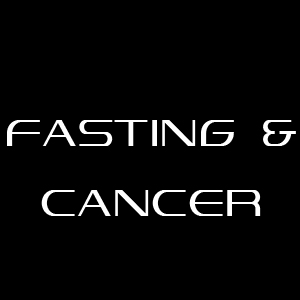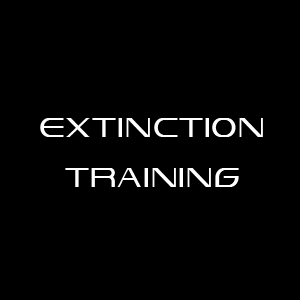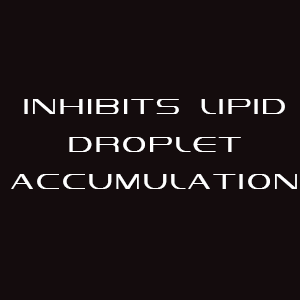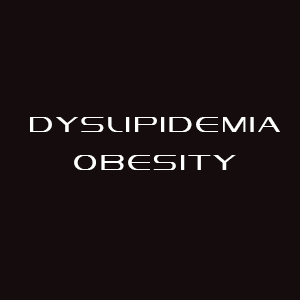LEYDIG CELL STEROIDOGENESIS
June 1, 2022FASTING CANCER
June 1, 2022- Erasing fear memories with extinction training
- extinction training regulates neuroadaptive responses to withdrawal from chronic cocaine self-administration
- Fear erasure in mice requires synergy between antidepressant drugs and extinction training
- Functional communication training with and without extinction and punishment
- Renewal of formerly conditioned fear in rats after extensive extinction training
- extinction training in conjunction with a partial agonist of the glycine site on the NMDA receptor erases memory trace
- Effectiveness of functional communication training with and without extinction and punishment: A summary of 21 inpatient cases
- Ventral medial prefrontal cortex and emotional perseveration: the memory for prior extinction training
- Increasing response variability of mand frames with script training and extinction
- Rapid remission of conditioned fear expression with extinction training paired with vagus nerve stimulation
- Different neural substrates mediate cocaine seeking after abstinence versus extinction training : a critical role for the dorsolateral caudate–putamen
- Behavior potentiality as a joint function of the amount of training and the degree of hunger at the time of extinction.
- Resistance to punishment and extinction following training with shock or nonreinforcement.
- Prefrontal infusion of PD098059 immediately after fear extinction training blocks extinction‐associated prefrontal synaptic plasticity and decreases prefrontal ERK2 …
- Post-retrieval extinction training enhances or hinders the extinction of morphine-induced conditioned place preference in rats dependent on the retrieval-extinction …
- Consequences of extinction training on associative and non-associative fear in a mouse model of Posttraumatic Stress Disorder (PTSD)
- extinction training after cocaine self-administration induces glutamatergic plasticity to inhibit cocaine seeking
- Spontaneous recovery varies inversely with the training –extinction interval
- Conditioned place preference with morphine: the effect of extinction training on the reinforcing CR
- Updating fearful memories with extinction training during reconsolidation: a human study using auditory aversive stimuli
- Young and old Pavlovian fear memories can be modified with extinction training during reconsolidation in humans
- Retrieval of memory for fear-motivated training initiates extinction requiring protein synthesis in the rat hippocampus
- Enhancing endocannabinoid neurotransmission augments the efficacy of extinction training and ameliorates traumatic stress-induced behavioral alterations …
- Persistence and resistance to extinction in the domestic dog: Basic research and applications to canine training
- The effect of mindfulness training on extinction retention
- The effect of discrimination training on extinction.
- Facilitating translational science in anxiety disorders by adjusting extinction training in the laboratory to exposure-based therapy procedures
- extinction training during the reconsolidation window prevents recovery of fear
- Reducing escape behavior and increasing task completion with functional communication training , extinction and response chaining
- Combined brain‐derived neurotrophic factor with extinction training alleviate impaired fear extinction in an animal model of post‐traumatic stress disorder
- Ceftriaxone normalizes nucleus accumbens synaptic transmission, glutamate transport, and export following cocaine self-administration and extinction training
- Inhibition of spontaneous recovery of fear by mGluR5 after prolonged extinction training
- Promoting long-term inhibition of human fear responses by non-invasive transcutaneous vagus nerve stimulation during extinction training
- training ‐induced changes in the expression of GABAA‐associated genes in the amygdala after the acquisition and extinction of Pavlovian fear
- Effects of extinction alone and extinction plus functional communication training on covariation of problem behaviors
- Avoidance perseveration during extinction training in Wistar-Kyoto rats: an interaction of innate vulnerability and stressor intensity
- extinction training of sweet cherries in France-appraisal after six years
- extinction training regulates tyrosine hydroxylase during withdrawal from cocaine self-administration
- The effects of different amounts of training on the resistance to extinction of different patterns of partially reinforced responses.
- Eliminating behavior with omission and extinction after varying amounts of training
- extinction memory in the crab Chasmagnathus: recovery protocols and effects of multi-trial extinction training
- Resurgence is greater following a return to the training context than remaining in the extinction context
- Differential effects of continuous extinction and discrimination training on the generalization gradient.
- Effects of approach-avoidance training on the extinction and return of fear responses
- The effects of extinction training in reducing the reinstatement of drug-seeking behavior: involvement of NMDA receptors
- Opening the reconsolidation window using the mind’s eye: extinction training during reconsolidation disrupts fear memory expression following mental imagery …
- Partial-reinforcement extinction effect following different amounts of training .
- EFFECT OF AMOUNT OF training ON RATE AND DURATION OF RESPONDING DURING EXTINCTION1
- I doubt it is safe: A meta-analysis of self-reported intolerance of uncertainty and threat extinction training
- Extended acquisition training and resistance to extinction.
- Response elimination effectiveness of omission and two extinction training procedures
- Relative resistance to extinction of escape training and avoidance training .
- Characterizing the nature of emotional-associative learning deficits in panic disorder: An fMRI study on fear conditioning, extinction training and recall
- Functional communication training without extinction using concurrent schedules of differing magnitudes of reinforcement in classrooms
- Rapid reacquisition of fear to a completely extinguished context is replaced by transient impairment with additional extinction training .
- Changes in endocannabinoid and N-acylethanolamine levels in rat brain structures following cocaine self-administration and extinction training
- Clicker increases resistance to extinction but does not decrease training time of a simple operant task in domestic dogs (Canis familiaris)
- Effect of D‐cycloserine in conjunction with fear extinction training on extracellular signal‐regulated kinase activation in the medial prefrontal cortex and amygdala in rat
- Effect of brief clinic-based training on the ability of caregivers to implement escape extinction
- Effect of d-cycloserine on fear extinction training in adults with social anxiety disorder
- extinction training after cocaine self-administration influences the epigenetic and genetic machinery responsible for glutamatergic transporter gene expression in male …
- Alternative response training , differential reinforcement of other behavior, and extinction in squirrel monkeys (saimiri sciureus) 1
- Effects of retrieval-extinction training on internet gaming disorder
- Hippocampal ripple-contingent training accelerates trace eyeblink conditioning and retards extinction in rabbits
- Response strength as a function of drive level during training and extinction.
- Neuropeptide Y2 receptors in anteroventral BNST control remote fear memory depending on extinction training
- The combination of long-term ketamine and extinction training contributes to fear erasure by Bdnf methylation
- Transfer of persistence from fixed-ratio barpress training to runway extinction
- training reinforcement rates, resistance to extinction, and the role of context in reinstatement
- Persistent reduction of cocaine seeking by pharmacological manipulation of adenosine A1 and A2A receptors during extinction training in rats
- extinction and dopamine receptor blockade after intermittent reinforcement training : Failure to observe functional equivalence
- extinction as a function of intensity of punishment, amount of training , and reinforcement of a competing response.
- Effect of interpolated extinction and level of training on the” depression effect.”
- A behavior field approach to instrumental learning in the rat: II. training parameters and a stage model of extinction
- Inhibition by diazepam of the effect of additional training and of extinction on the retention of shuttle avoidance behavior in rats.
- Effects of intersession delay and training level on avoidance extinction and intertrial behavior.
- Comparison of omission and extinction following FR reinforcement training
- A response duration schedule: Effects of training , extinction, and deprivation
- Influence of a small number of partial reinforcement training trials on resistance to extinction.
- Kappa opioid receptors mediate where fear is expressed following extinction training
- extinction training can make the extinction context a stimulus-specific inhibitor: A potential mechanism of experimental renewal
- Excitation and inhibition as a function of post training extinction of the excitatory cue used in Pavlovian inhibition training
- … disassociation of a conditioned stimulus and unconditioned stimulus during extinction training reduces both time to asymptotic extinction and spontaneous recovery of …
- Resistance to extinction as a function of the interaction between training and extinction delays
- training parents to use extinction to eliminate nighttime crying by gradually increasing the criteria for ignoring crying
- No difference in extinction behavior in planaria following various types and amounts of training
- Cognitive flexibility training improves extinction retention memory and enhances cortical dopamine with and without traumatic stress exposure
- Can contingency rehearsal during the interval between a retrieval cue and extinction training change the effects of post‐retrieval extinction?
- Impairment in extinction of contextual and cued fear following post-training whole-body irradiation
- Effects of verbal instructions and physical threat removal prior to extinction training on the return of conditioned fear
- Effects of intertrial reinforcement on resistance to extinction following extended training .
- Post-training memory facilitation blocks extinction but not retroactive interference
- Consolidation of an extinction memory depends on the unconditioned stimulus magnitude previously experienced during training
- An examination of Intolerance of Uncertainty and contingency instruction on multiple indices during threat acquisition and extinction training
- Computer training : Pathway from Extinction.
- Cocaine-induced glutamate receptor trafficking is abrogated by extinction training in the rat hippocampus
- Resistance to extinction after partial reinforcement training with blocking of the hippocampal theta rhythm by septal stimulation
- Resistance to extinction of a taste aversion: effects of level of training and procedures used in acquisition and extinction
- extinction of inhibition after serial and simultaneous feature negative discrimination training
- Facilitative effects of environmental enrichment for cocaine relapse prevention are dependent on extinction training context and involve increased TrkB signaling in …
- Resistance to extinction in the pigeon after partially reinforced instrumental training under discrete-trials conditions
- Resistance to extinction after varying amounts of discriminative or nondiscriminative instrumental training .
- Facilitated extinction training to improve pharmacotherapy for smoking cessation: a pilot feasibility trial
- Impact of laparoscopy on training : are open appendectomy and cholecystectomy on the brink of extinction?
- extinction of sensory preconditioning using CER training .
- extinction procedure induces pruning of dendritic spines in CA1 hippocampal field depending on strength of training in rats
- extinction and spontaneous recovery of conditioned eyelid responses as a function of amount of acquisition and extinction training .
- extinction after regular and irregular reward schedules in the infant rat: influence of age and training duration
- Potent attenuation of context fear by extinction training contiguous with acquisition
- Omission training compared with yoked controls and extinction in multiple-schedule discrimination learning
- Glycine transporter-1 inhibition preceding extinction training inhibits reacquisition of cocaine seeking
- Resistance to extinction as a function of continuous or intermittent presentation of a training cue.
- Prevention of recurrent affective episodes using extinction training in the reconsolidation window: A testable psychotherapeutic strategy
- Changes in fruiting behaviour and vegetative development of’Scifresh’apple in response to artificial spur extinction using centrifugal training
- Effect of delay between training and extinction on the extinction of an avoidance response.
- Resistance to extinction in the fish after extensive training with partial reinforcement
- A COMPARISON OF TWO TYPES OF extinction FOLLOWING FIXED‐RATIO training 1
- Elevated activity in the dorsal dentate gyrus reduces expression of fear memory after fear extinction training
- Resistance to extinction as a function of degree of reproduction of training conditions.
- Resistance to extinction as a function of percentage of reinforcement, number of training trials, and conditioned reinforcement.
- Stimulus–reinforcer relations established during training determine resistance to extinction and relapse via reinstatement
- Response production during extinction training is not sufficient for extinction of evaluative conditioning
- Extended training extinction effect under massed and spaced extinction trials.
- extinction training for tinnitus
- Drive, reward, and training parameters, and the overlearning-extinction effect (OEE)
- Partial-reward training for resistance to punishment and to subsequent extinction.
- Acquisition and extinction of conditional immunoenhancement following training with cyclophosphamide
- Effect of interpolating continuous reinforcement between partial training and extinction
- extinction performance following discrimination training .
- Effects of corticosterone on mild auditory fear conditioning and extinction; role of sex and training paradigm
- The effects of acquisition training schedule on extinction and reinstatement of cocaine self-administration in male rats.
- Post-training vasopressin injections may facilitate or delay shuttle-box avoidance extinction
- Cocaine self-administration, extinction training and drug-induced relapse change metabotropic glutamate mGlu5 receptors expression: Evidence from radioligand …
- Effect of interpolated extinction after partial delay of reward training on subsequent reacquisition and extinction
- The influence of amount and kind of training on the acquisition and extinction of escape and avoidance responses.
- Omission training and extinction in rats with septal damage
- extinction training following cocaine or MDMA self-administration produces discrete changes in D2-like and mGlu5 receptor density in the rat brain
- Partial reward training level and reward magnitude: Effects on acquisition and extinction
- Effect of WIN55-212-2 and consequences of extinction training on conditioned fear memory in PTSD male rats
- Reward magnitude and number of training trials as joint factors in extinction
- Resistance to extinction after varying amounts of nondiscriminative or cue-correlated escape training .
- Resistance to extinction and continuous punishment in humans as a function of partial reward and partial punishment training
- Key pecking during extinction after intermittent or continuous reinforcement as a function of the number of reinforcers delivered during training
- extinction performance as a function of reinforcement magnitude and number of training trials
- Acquisition and extinction of conditioned suppression under two training procedures
- Latent extinction as a function of number of training trials
- Influence of degree of training and prior reinforcer magnitude on contrast effects and resistance to extinction within S.
- The effect of differential hippocampal lesions and pre-and postoperative training on extinction.
- Another look at the extinction of conditioned flavor preferences: Amount of training and tests for spontaneous recovery
- Protein synthesis is not required for acquisition, consolidation, and extinction of high foot-shock active avoidance training
- Persistence early and late in extinction as a function of number of continuous reinforcements preceding partial reinforcement training
- Associative status of the training context determines the effectiveness of compound extinction.
- Partial reinforcement delayed extinction effect after regularly alternating reward training
- extinction and spontaneous recovery as a function of amount of training and extinction intertrial interval.
- Continuous before partial reinforcement: Effect on persistence training and resistance to extinction in humans
- Response elimination among chronic psychiatric patients: extinction versus omission training
- Enduring abolishment of remote but not recent expression of conditioned fear by the blockade of calcium-permeable AMPA receptors before extinction training
- Influence of partial reinforcement pattern and intertrial reinforcement on extinction performance following abbreviated training
- Resistance to extinction and punishment following training with shock and non-reinforcement: Failure to obtain cross-tolerance
- Comparison of omission training and extinction training in mentally retarded individuals
- Discrimination-reversal, extinction, and acquisition after different amounts of training
- Resistance to extinction as a function of level of acquisition training and altered stimulus conditions during extinction
- Is it possible to modify fear memories in humans with extinction training within a single day?
- Reward training : extinction
- Effect of patterns of shock and nonshock training trials on response alternation and extinction in escape training
- Fibroblast growth factor-2 enhancement of extinction recall depends on the success of within-session extinction training in rats: a re-analysis
- The partial reinforcement extinction effect following conventional and “placed” training trials
- Relative effects of omission training and extinction training in obese subjects
- Effects of drive and training on extinction after self-stimulation and food reward
- Resistance to extinction as a joint function of partial reward pattern and length of training .
- Baseline response rate and its relationship to effects of omission and extinction training in pigeons
- Involvement of metabotropic glutamate receptor 5 in the inhibition of methamphetamine‐associated contextual memory after prolonged extinction training
- Resistance to extinction and satiation following training on random-ratio schedules of reinforcement
- Resistance of a free operant to extinction and suppression with punishment as a function of amount of training
- The effect of effort and training -test similarity on resistance to extinction
- Avoidance training in both alcohol and non-drug states increases the resistance-to-extinction of an avoidance response in rats
- extinction performance as a function of NR transitions and intertrial reinforcement with extended partial reinforcement training
- Effects of extended context discrimination training and context extinction on transfer of context dependency of conditioned flavor aversion
- Determinants of Resistance to extinction after Three training Trials: 2. The Child’s Expectations
- Acquisition and extinction of an instrumental response as a function of delay of intracranial stimulation reward and amount of training
- Uncoupling nNOS-PSD-95 in mPFC inhibits morphine priming-induced reinstatement after extinction training
- extinction performance as a function of RR transitions with abbreviated training
- … of uncertainty effects on subjective, psychophysiological, and neural markers during uninstructed and instructed threat acquisition and extinction training
- extinction of bar pressing following training under a multiple VI VI schedule
- Resistance to extinction of the CER as a function of shock-reinforcement training schedules
- Comparison of training methods, type of problem, and apparatus in acquisition and extinction
- Surprising nonreward and response effort: extinction after progressive-ratio training in rats and pigeons
- Efficacy of systolic extinction training in fibromyalgia patients with elevated blood pressure response to stress: a tailored randomized controlled trial
- Effects of random vs. alternating delay of reinforcement in training upon extinction performance.
- Retrace effect in rats’ extinction performance following discrimination training and training with differential reward magnitude.
- Decreased resistance to extinction in ob/ob mice following operant training
- Performance under massed or spaced extinction following different sequences of varied reward training
- Persistence in punishment and extinction testing as a function of percentages of punishment and reward in training
- Efficacy of Systolic extinction training (SET) in Fibromyalgia Patients with elevated Blood Pressure Response to Stress-A Tailored RCT Study
- Increasing team proficiency through training . 2. The acquisition and extinction of a team response
- Intersession delay and avoidance extinction to training and generalization stimuli
- Persistent behaviour in extinction after partial deprivation in training
- Durability of the partial reinforcement and partial delay of reinforcement extinction effects after minimal acquisition training
- Preventing translational scientists from extinction: The long-term impact of a personalized training program in translational medicine on the careers of …
- Resistance to extinction as a function of reinforcement schedule and training level: A test of Theios and Brelsford’s theory
- … -generated memories of nonreinforcement with signal-generated memories of reinforcement during partial reinforcement training : Effect on resistance to extinction
- Blocking and partial reinforcement: Effects of NR transitions early vs. late in training on resistance to extinction
- Rats’ extinction performance as a function of deprivation level during training and partial reinforcement.
- Parent training in Positive Reinforcement and extinction to Effect a Decrease in Noncompliant Behavior.
- Sensory extinction of stereotyped object‐dropping: Identification of a reinforcer for skill training
- Resistance to extinction as a function of instrumental training under two levels of food deprivation and a shift in incentive
- Changes in heart rate during discriminative reward training and extinction in the rat.
- Resistance to extinction after variable training as a function of multiple associations.
- Acquisition and extinction following extended partial reinforcement training under small or large reward
- Effects of sodium benzoate treatment in combination with an extinction training on the maintenance of cocaine-supported memory
- Obstetric Forceps: A Species on the Brink of extinction andForceps, Simulation, and Social Media andSimulation training for Forceps-Assisted Vaginal Delivery and …
- training history affects magnitude of spontaneous recovery from extinction of appetitive conditioned responding
- Resistance to extinction in humans as a function of sequential variables and amount of acquisition training
- Changes in heart rate during discriminative reward training and extinction in the cat.
- Resistance to extinction in the developing chick: Effects of punishment and preextinction training
- The effect of degree and type of training upon extinction of a response chain in pigeons
- Summation and retardation test performance following extinction or Pavlovian conditioned inhibition training
- The effect of training on response force during operant extinction
- Sequence of shock and nonshock training trials influences the extinction of escape behavior
- Escape conditioning followed by extinction with and without the aversive training stimulus
- Resistance to extinction as a function of schedules of direct or vicarious reinforcement and amount of acquisition training .
- Changes in heart rate during avoidance training and extinction in the cat.
- Differential resistance to extinction as a function of fixed-interval contrast in training
- The Influence of training Level and Probability Magnitude on the extinction of Probability Matching Responses
- Acquisition and extinction with rewarded goal box placements interpolated among training trials
- Interpolated continuous reinforcement, training level, and resistance to extinction: The role of discriminative cues.
- Implementing Chronic Exercise After the Completion of extinction training in Mice Shows Promise in Reducing the Return of Fear in the Long Term
- extinction and the return of fear: a dynamic relationship dependent on timing of training , timing of recall, and postsynaptic AMPA receptor stability
- Retraction: Inhibition of Spontaneous Recovery of Fear by mGluR5 after Prolonged extinction training
- Telehealth Caregiver training : Treating Food Selectivity without Extinction
- extinction training for tinnitus
- Post-extinction Delay Necessary to Induce Retrograde Amnesia for a Moderate extinction training Memory
- Influence of avoidance behavior on extinction training during memory reconsolidation.
- The Effects of Using Behavioral Skills training to Teach Parents to Implement Escape extinction Procedures in the Treatment of Pediatric Feeding Disorders
- Resistance to extinction as a function of level of acquisition training and stimulus alterations during extinction
- Frequency of reinforcement and preliminary training conditions as determinants of extinction
- Require Producing Evaluative Responses During extinction training ? Manuscript in revision, Cognition and Emotion.
- The effects of NR transitions under extended training conditions on resistance to extinction
- extinction training in conjunction with a NMDA receptor partial agonist erases memory trace
- Memory from one-trial training is resistant to extinction in Lymnaea Stagnaliss
- The effect of interpolated extinction training on the reversal of a simultaneous brightness discrimination.
- The effects of extinction training on DNA methylation protein and hippocampal newborn neurons in the conditioned-fear rat model
- Correction to: extinction training following cocaine or MDMA self-administration produces discrete changes in D2-like and mGlu5 receptor density in the rat brain
- Spatial training in the Water Maze facilitates extinction and prevents reinstatement of cocaine-induced Conditioned Place Preference
- Effect of a Randomized Intermittent Stimulus on Resistance to extinction as a Function of Acquisition training
- Increasing Response Variability of Mand Frames with Script training and extinction Procedures
- A Comparison of Mixed and Multiple Schedules of Reinforcement and extinction Following Functional Communication training
- Effects of the structure of serial patterns and the amount of training on the resistance to extinction in rats
- Effects of Shock and Safe Box Similarity on Escape training and Extinction
- Functional communication training plus extinction is effective in reducing problem behavior maintained by environmental rearrangement
- Erasure of traumatic fear memory in mice by a combination of fluoxetine and fear extinction training
- Modulation of the mTOR pathway in male Lewis rats after morphine self-administration and subsequent extinction training
- Resistance to punishment and extinction in one situation as a function of training with shock or non-reinforcement in a different situation1
- Behavioral and molecular factors contributing to beneficial effects of environmental enrichment and extinction training on cocaine relapse prevention
- extinction and discriminated omission training in a successive matching-to-sample task
- The rate of acquisition and extinction of a passive avoidance response as a function of level of training and age in rats
- The role of the prefrontal cortex in cocaine and heroin seeking following extinction training
- A clinical application of functional communication training plus extinction and contingency-based delay under typical and socially-relevant contexts.






